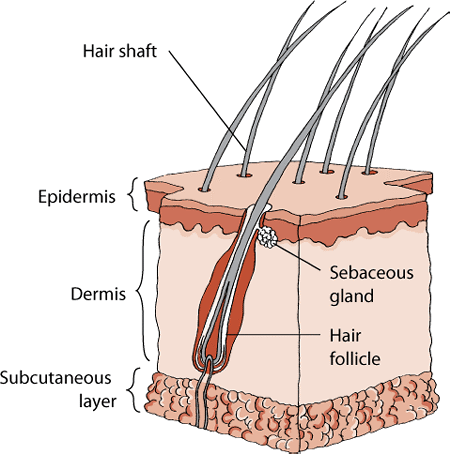- Kartaltepe Mahallesi İncirli Caddesi Limon Çiçeği Sokak No: 1 34145 Bakırköy İstanbul
- +90 541 548 52 47

Step by Step: Elon Musk Hair Transplant
27/09/2022
What is graft?
27/09/2022Dermis is the second layer of skin in our body. It mostly consists of water, elastic fibers and other important structures that serve to support the skin.
What is the Difference Between Dermis and Epidermis?
The epidermis is the outermost layer of visible skin. The cells in the epidermis are keratinized and hardened. Keratinization is the process that causes the hair to mature and prepare for shedding.
Just below the epidermis is an even thicker layer called the dermis. Cells at this level are alive and divide rapidly. They are eventually pushed to the surface so that they can undergo keratinization.
Structures of the Dermis
The dermis contains the following features:
Connective tissue- this is usually in the form of dense protein fibers called collagen. Collagen is what gives skin its strength and durability. As a person ages, their collagen hardens and the skin becomes less elastic. This is what creates wrinkles.
Nerve endings – these sensory fibers send textural cues to the brain when stimulated by touch. This is what makes the body feel the sensation of pleasure and pain.
Sebaceous glands- also known as “sweat glands”, these formations look like tightly coiled tubes. They produce sebum, which helps moisturize the skin. This also acts as a barrier to protect the skin from bacterial and fungal infections.
Papillary dermis- this is the highest level of the dermis and is fused with the epidermis with the use of collagen. The papilla in this area is what connects the epidermis to the blood supply.
Dermo-epidermal junction- this tiny structural support system is what allows the dermal and epidermal layers to replace cells and molecules such as keratinocytes.
Reticular dermis – this is the lower level. Collagen at this level grows simultaneously in all different directions. Collagen does not grow in one homogeneous direction until it approaches the epidermis itself.
Dermis and Fibroblasts
Dermal fibroblasts are the primary cell types found in this skin layer. They are much more abundant in the higher levels of the dermis and almost absent at lower levels. Although these cells do not differentiate into other cell types, they are responsible for producing collagen (with the help of keratinocytes) and other important elastin fibers.
Fibroblasts play a critical role when it comes to skin healing from injury. These are what prompts collagen to regrow on the wound, and also what signals a new pathway for blood vessels to traverse, soon after a scar has formed.
Fibroblasts and Stem Cell Therapy
Stem cells can be considered as cells that can transform into the cell type required to heal an injury. Fibroblasts produce certain types of proteins that can help stabilize and improve stem cell survival. Therefore, dermal fibroblast cells are often removed from body tissue and cultured with stem cells. Dermal fibroblasts can themselves become stem cells, although their use is limited.




